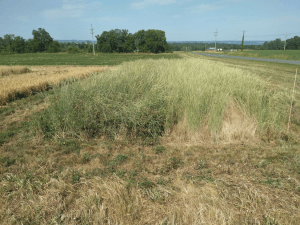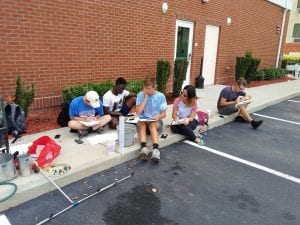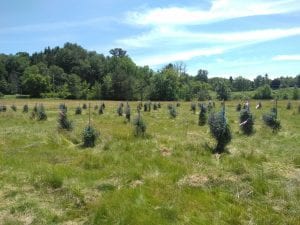Only a little muddy in the field!
As the weather starts to change, and my internship draws closer to an end the lab is still keeping me on my toes with new and exciting tasks. After helping plant the plots, I was given the liberty to plan and construct a fence around our Legume Cover Crop Breeding experiments. Whitetail deer can be a big nuisance in Tompkins county and can commonly eat data! To prevent this we installed over 4000ft of double stranded fence
First off, I did some research on what would be sufficient and went to Agway in downtown Ithaca and purchased all the materials necessary. We used over 75 metal T-post stakes and bought a lot of poly tape fencing strand. The field was too wet to drive all the way to the plot so it took us a while to carry all the materials there.
I then used a stake pounder to put fencing posts every 25 to 30ft. I came to the quick realization that pounding stakes is much more challenging in rocky , however we ended up finishing the first fence in under 3hrs!
The following day we did the same process around the second plot and set up the fence chargers. Using a voltmeter we checked the charge and both were zapping with over 950 volts! It was a job well done, and now our precious hairy vetch and pea seedlings will be saved from the deer!















